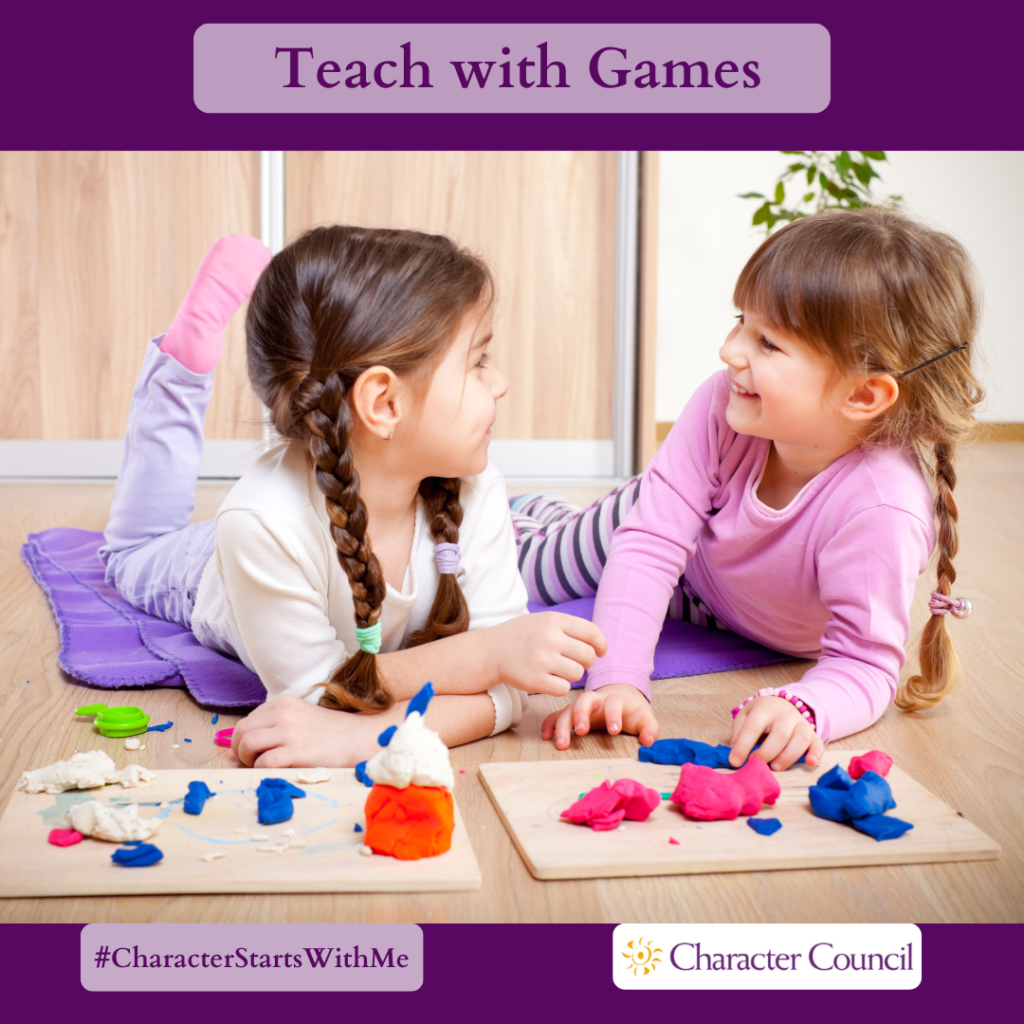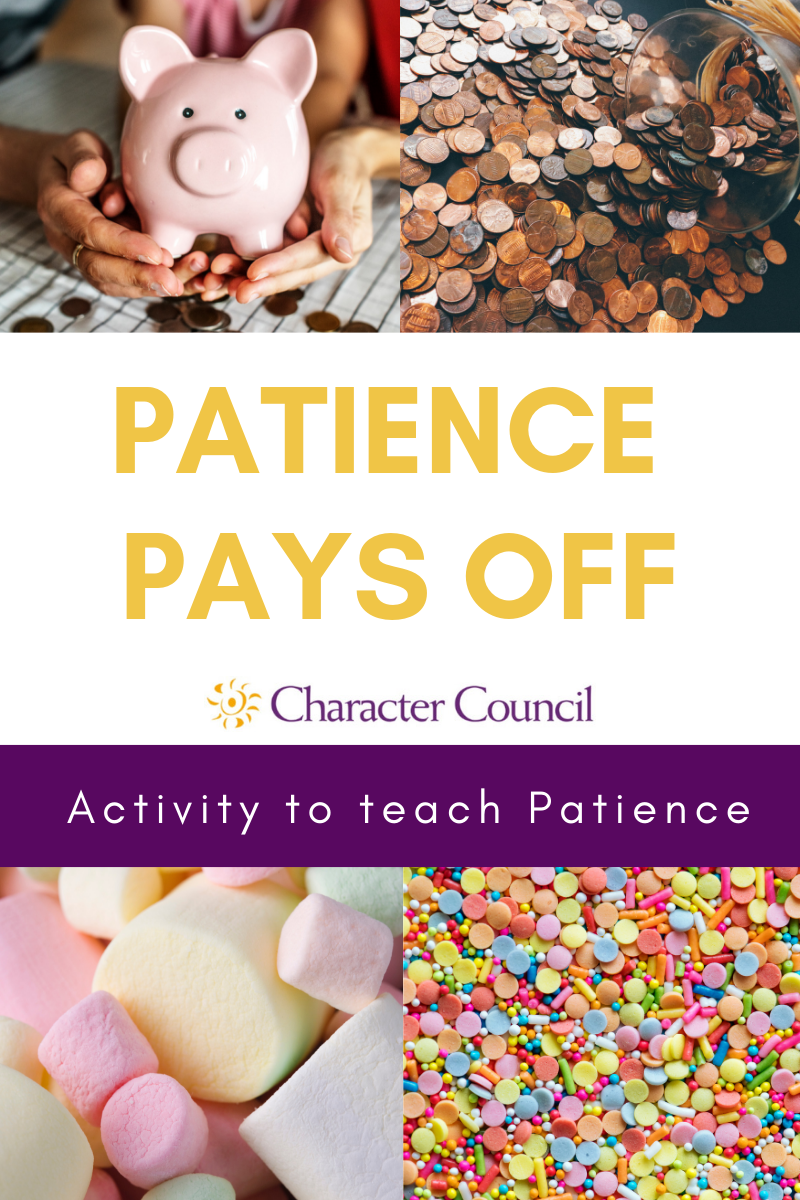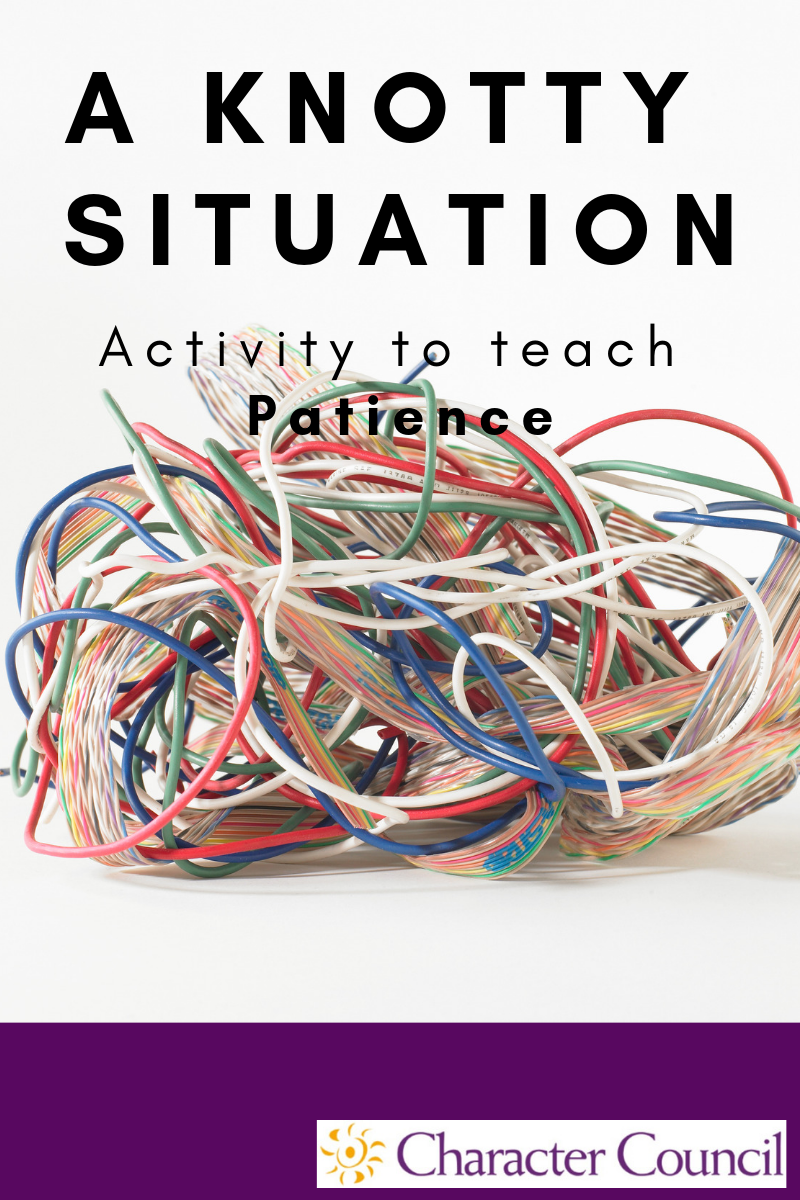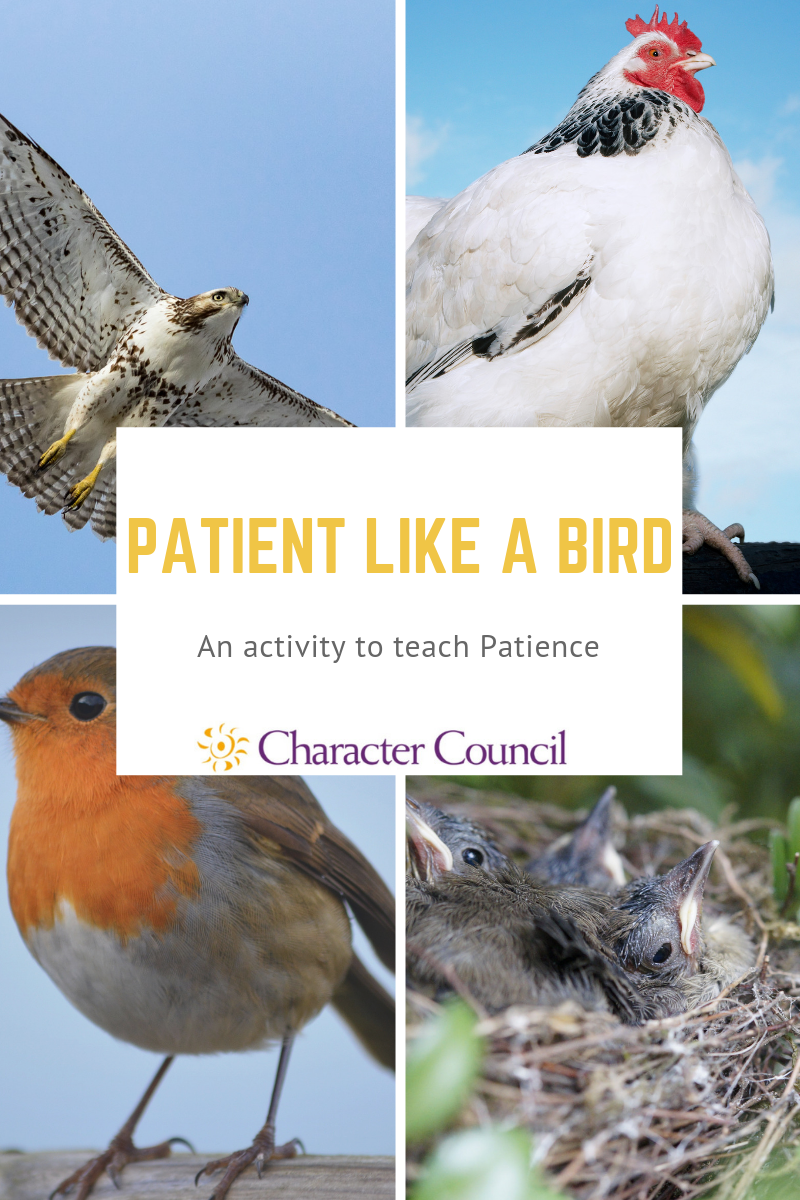
Patience Activities
The activities here are fun ways to teach character. The game aspect makes the lesson more memorable. Each activity has processing questions at the end. Without processing the activity, the exercise is just a game. To make it a stronger lesson when you process it, relate the character quality to a core value that your organization promotes.
Consider picking a student to run the activity. You will need to give them time ahead of the activity to prepare. Another option is to pick a few students to run the activity for a younger classroom after you have run it for your class. Encourage your students to repeat it in the home for younger siblings or even parents.


Patience Pays Off
Savings
Use the idea of saving money to illustrate the importance of patience. For younger students, use a simple example of saving 50 cents a week to buy a special item. This could also appear as a math question on a test or assignment. For older students, include the concept of interest when saving. Point out that the longer you save (more patience), the larger the reward.
Anticipation
Place a marshmallow or several small candies such as M&Ms or a seasonal treat on each student’s desk. Explain that they can eat these whenever they want to but if they wait until after lunch they will get twice as much. Discuss the concept of delayed gratification and waiting for good things to happen.

A Knotty Situation
Have you ever had to untangle a necklace, or hair ties, rope or Christmas lights? If you have, then you can do today’s activity!
Divide students into groups of 6 or 8 (must be an even number). Arrange each group in a tight circle. All should extend their right hand and grab the hand of someone opposite them in the circle. Then each should use their left hand to grab someone else’s left hand. The group now must untangle themselves into a circle without letting go of the hands. (If you have an odd number, one person can act as coach for a single group or be a commentator for the whole group and do a play-by-play announcement of each group’s progress.) When the game is over, discuss the importance of patience in working out the problem and what motivated them to keep going when it got tough. Be aware that depending on how they grab hands, a single group may end up in two circles. This activity requires that students be in close proximity to each other. Some students may not be comfortable with the closeness required. In addition, older groups may not be comfortable mixing the sexes within a group so you may need to separate the boys from the girls.
To process this activity, ask these questions:
- Did you have fun trying to untangle the group?
- Did you think it was going to be difficult when you first started?
- How did patience help untangle the group?
- Was anyone an “untangle master” that was able to lead the group?
- What happened when everyone was making suggestions at once?
- When you are faced with a difficult situation, will you remember the untangling and be patient?

Patient Like A Bird
Momma Birds have much patience when it comes to sitting on her eggs to hatch them. Many go for long periods of time without food and water while they wait for the baby birds to hatch.
Ask the students how long they think it takes to hatch the eggs of the following birds.
Robin 12 – 14 days
Chickens 21 days
Hawk 28-35 days
Pick one of the birds above or one of your own choosing and post a picture of the bird in the classroom. Using sticky notes or writing on the whiteboard/chalkboard, note the number of days it takes to hatch their eggs. Every day, decrease the number (on Mondays, decrease by the number of days not in school) and count down until the bird’s eggs are hatched. Use this as a reminder of how patient this momma bird needs to be.
Use a picture of eggs in a nest (see the download link for an example) to help the students identify when they are not patient. In the egg in the front that you can see the whole egg, have them write down an example of when you need to be patient. In the other eggs, write down something that can help them have patience. Some examples are below:
Waiting in line
Sing a song in your head
Play a quiet finger game
Waiting for your turn in a game
Cheer the other players
Think about what you can do on your turn
Pay attention to the game
You can choose for all the students to write the same thing or they can think of their own. For younger students, you may just want to have them draw a picture of what they look like when they are waiting patiently.
When finished, process the activity with these or similar questions:
- Did you like thinking about birds hatching eggs?
- What would happen if the momma bird was not patient and left her eggs for too long?
- What happens when we become impatient?
- Can you see a benefit to being patient?
- Next time you are impatient, can you remember the momma bird?